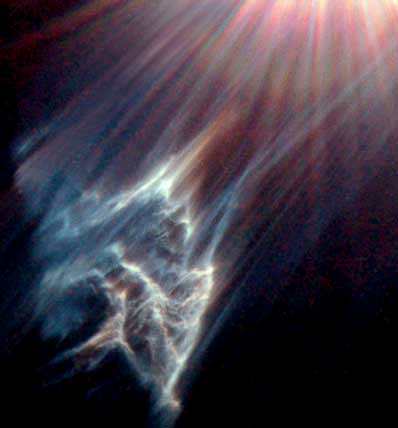
December 14, 2000 Hubble Space Telescope - In this new Hubble image, the star Merope in the Pleiades cluster is just outside the frame on the upper right. Not far away in astronomical terms is a cloud of dust and gas referred to as "Barnard's Merope Nebula," or IC 349. The cloud is being destroyed by the passage of Merope. NASA says the beautiful and eerie light effect is produced "like a flashlight beam shining off the wall of a cave. The star is reflecting light off the surface of pitch black clouds of cold gas laced with dust. These are called reflection nebulae." The parallel wisps extending from the lower left to upper right are explained by University of Hawaii astronomers, George Herbig and Theodore Simon, as dust particles slowed down by the strong starlight. Physicists call this phenomenon "radiation pressure."
Click here to subscribe and get instant access to read this report.
Click here to check your existing subscription status.
Existing members, login below:
© 1998 - 2025 by Linda Moulton Howe.
All Rights Reserved.

